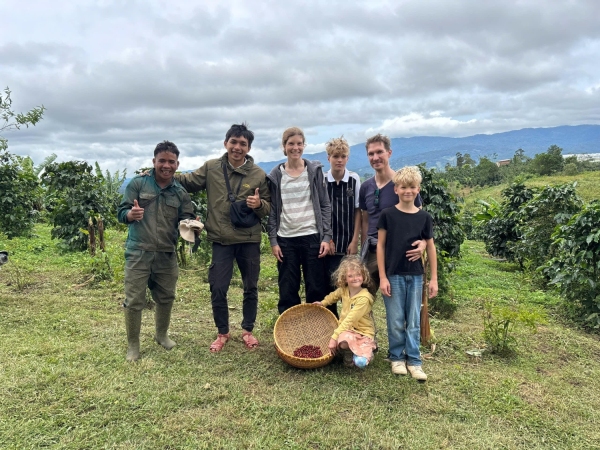
Bài viết này cũng có phiên bản tiếng Việt: Du Lịch Văn Hóa Tại Thái Lan – Người Lanna Và Nghệ Thuật Bán Di Sản.
This article isn’t just about tourism—it’s about how cultural preservation is woven into everyday life and what Vietnam can learn from this approach.
At the beginning of 2025, my friend Miwa visited Vietnam to source handmade crafts and woven textiles from local artisans. Initially, I found them expensive and impractical, but she emphasized their deeper value:
✅ Cultural sustainability – As artisans age and skills fade, restoring lost craftsmanship—like in Japan—becomes costly.
✅ Authenticity matters – Handmade items, though not always practical, carry traditions that machine-made goods can’t replicate.
This discussion set the tone for my visit to Chiang Mai, where I experienced firsthand how the Lanna people turn local heritage into an immersive tourism model.

In 2024, I attended a Khantoke Dinner & dance performance in Chiang Mai. While the city has plenty of farm stays, trekking tours, and local markets, none felt distinctly different from Vietnam—until this experience.
What is a Khantoke Dinner?
A traditional Lanna-style dining experience featuring:
✅ Authentic northern Thai cuisine
✅ Live music & cultural dance performances
✅ Immersive storytelling through food & tradition
Location: Old Chiangmai Cultural Center
Price: Over 500,000 VND per person (excluding transportation)
Duration: 2-3 hours
The venue, a traditional wooden house, centered around a performance stage, added to the immersive cultural atmosphere.

Upon booking, the organizers contacted me via WhatsApp to arrange transportation—impressive attention to customer service.
Seating Options:
✅ Floor seating (following traditional Lanna customs)
✅ Table seating (for those preferring chairs)
Upon arrival, guests are greeted warmly, guided inside, and seated according to pre-arranged bookings.
💬 Observing Cultural Preferences:
🔹 Asian guests (Vietnamese, Lao, Thai) were more social & lively, engaging in conversation and enjoying drinks.
🔹 Western guests attended solo, silently appreciating the performance and traditional setting.
The thoughtful hospitality contributed to an unforgettable experience.

Khantoke Dinners feature sticky rice, boiled vegetables, and fried dishes—flavors range from spicy, slightly sweet, and mildly bitter.
While some might find the food oily, the presentation elevates its cultural significance.
❌ Serving sticky rice in plain bowls = just another meal.
✅ Serving it in woven bamboo containers = a storytelling experience.
The staff ensured that unlimited servings were available, reinforcing Thai hospitality.

Music & Traditional Dance: The Heart of Lanna Culture
The highlight was the Lanna-style dance, accompanied by live music that immersed guests in Chiang Mai’s heritage.
🚀 Key Takeaway:
This level of cultural commitment wouldn’t be possible without government support—preserving traditional performances requires long-term funding, salaries, and strong organizational backing.
Would implementing a similar experience in Vietnam be possible? Certainly—but it requires investment, structure, and deep-rooted cultural commitment.
A traditional Lanna dance performed on the central stage during a Khantoke dinner in Chiang Mai. Live music and graceful movements bring Northern Thai heritage to life through sound and motion.
Final Thoughts: Lessons for Vietnam
✅ Cultural tourism isn’t just about selling products—it’s about creating immersive experiences.
✅ Thailand & Japan successfully market their traditions—Vietnam must find a way to position its culture as premium rather than just focusing on raw agricultural exports.
✅ Economic growth vs. cultural erosion – Rapid development risks weakening cultural identity if preservation efforts aren’t prioritized.
For me, the best way forward isn’t just selling coffee—it’s about integrating heritage into farm experiences, ensuring tradition and tourism go hand in hand.
💬 What’s next?
👉 Researching how to integrate cultural tourism at HuyEco rather than solely focusing on agriculture.
Wishing everyone a prosperous & culturally rich year! 🎉
Eco Coffee Tour at HuyEco Farm
Discover how coffee farming and cultural storytelling come together in our immersive farm tour.
Order HuyEco Coffee
Support sustainable farming by ordering our specialty coffee directly from the source.
About HuyEco
Learn more about our regenerative agriculture model and community-based tourism.
More Articles on Sustainability
Explore stories on sustainable farming, cultural preservation, and eco-innovation.
Old Chiangmai Cultural Center – Khantoke Dinner
Official site of the traditional Khantoke dinner experience in Chiang Mai.
Tourism Authority of Thailand (TAT)
Official information on cultural tourism and events in Thailand.
UNESCO – Intangible Cultural Heritage
Global registry and guidance on safeguarding intangible cultural heritage.
Reader Comments
Newer articles
 Sustainable Coffee & Local Culture Tour in Da Lat — Arabica, Robusta & Ethical Farming
Sustainable Coffee & Local Culture Tour in Da Lat — Arabica, Robusta & Ethical Farming
 Discover Sustainable Coffee in Da Lat — A Farm-to-Cup Journey with HuyEco
Discover Sustainable Coffee in Da Lat — A Farm-to-Cup Journey with HuyEco
 Sustainable Coffee and Local Farming Realities in Da Lat HuyEc
Sustainable Coffee and Local Farming Realities in Da Lat HuyEc
 From Forest to Cup: A Personal Journey into Sustainable Coffee in Da Lat
From Forest to Cup: A Personal Journey into Sustainable Coffee in Da Lat
 Inside HuyEco: How a Coffee Huller Machine Transformed Our Coffee Production
Inside HuyEco: How a Coffee Huller Machine Transformed Our Coffee Production
 From Forest to Cup: A Farmer’s Vision for Sustainable Coffee and Local Travel in Da Lat
From Forest to Cup: A Farmer’s Vision for Sustainable Coffee and Local Travel in Da Lat
 Field Notes from Xã Lát: Rooted in Regenerative Coffee & Indigenous Farming
Field Notes from Xã Lát: Rooted in Regenerative Coffee & Indigenous Farming
 Đưng K'Nớ: Brewing Sustainable Coffee in Vietnam’s Highland Forest
Đưng K'Nớ: Brewing Sustainable Coffee in Vietnam’s Highland Forest
 Living Coffee Ecosystem in Da Lat – HuyEco’s Way of Growing
Living Coffee Ecosystem in Da Lat – HuyEco’s Way of Growing
 Nel Drip & Wabi-Sabi: Japanese Coffee Rituals at HuyEco Da Lat
Nel Drip & Wabi-Sabi: Japanese Coffee Rituals at HuyEco Da Lat